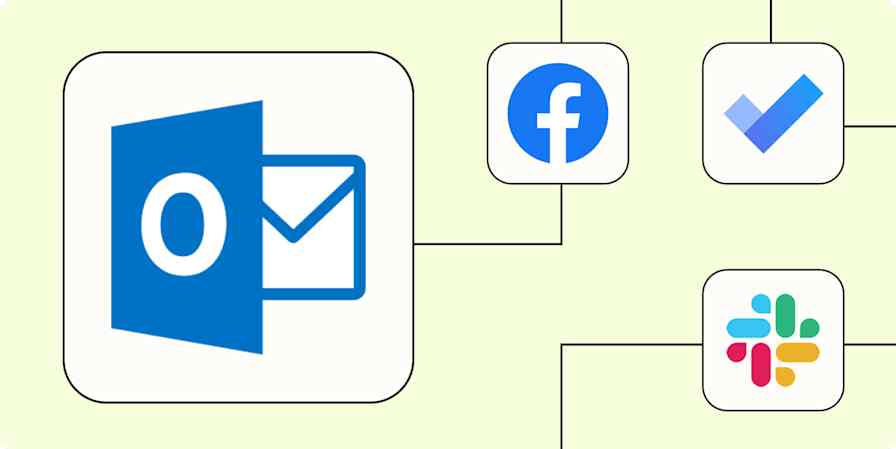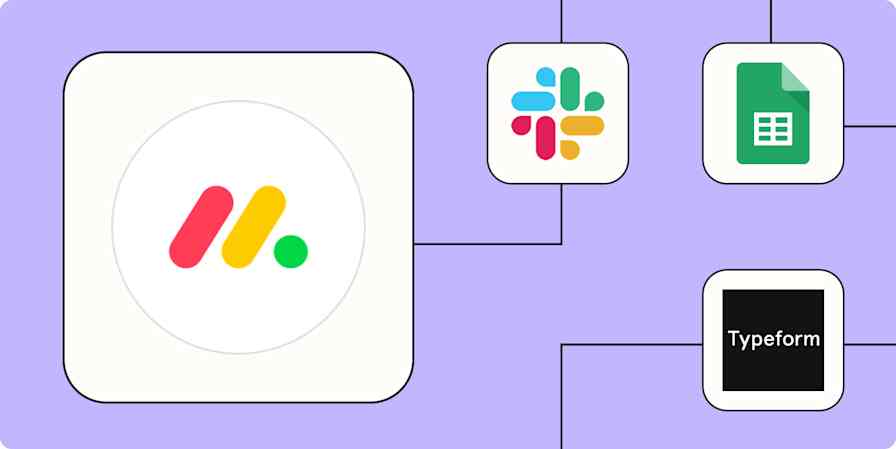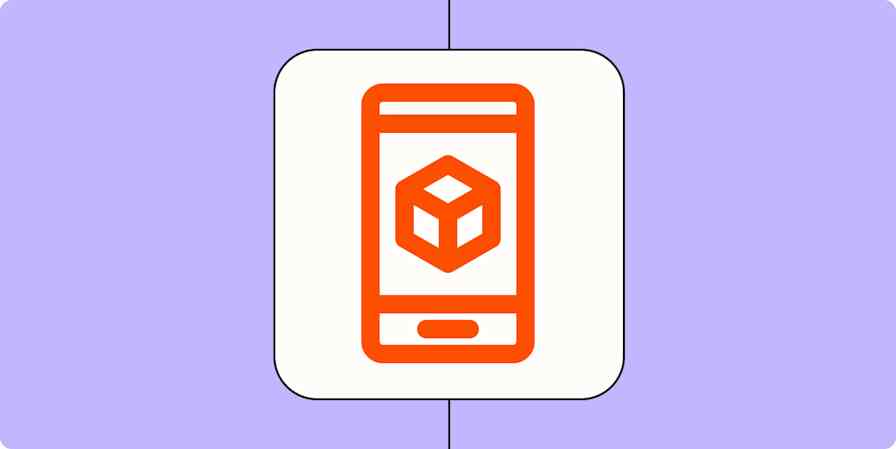Automated server monitoring tracks the real-time health of your IT operations—without you having to manually intervene. For example, instead of manually checking your monitoring tool, you can set up workflows that auto-log issues and send notifications for new incidents, speeding up problem resolution.
The digital world is always on. At all hours of the day and night, you can expect someone to be on your website or using your software tool. And they're depending on you to deliver them a seamless digital experience.
Preventing interruptions and outages, however small or short, is pivotal to the digital experience customers expect. And while most teams have dedicated on-call IT professionals working around the clock to resolve these kinds of issues, it never hurts to automate some of their processes to help keep them moving swiftly and securely.
Here are some of the ways you can automate your server monitoring system securely to help you manage downtime and outages.
Zapier is the most connected AI orchestration platform—integrating with thousands of apps from partners like Google, Salesforce, and Microsoft. Use interfaces, data tables, and logic to build secure, automated, AI-powered systems for your business-critical workflows across your organization's technology stack. Learn more.
Table of contents
Throughout this post, you'll see Zap templates—what we call our pre-made workflows. Just click on the button, and we'll guide you through customizing it. It only takes a few minutes. You can read more about setting up Zaps here.
What is server monitoring automation?
Scoping logs, looking for issues, managing alerts…all are necessary. But when your team is mired in those tasks all day long, they might not have time for strategic work. Server monitoring automation does these routine jobs for you, so everybody can focus on work that requires a more of a human touch.
Imagine health metrics routing themselves to the right places. Alerts firing the moment something goes wrong. Critical issues landing on your radar without anyone having to hop between dashboards. Automation makes all that possible, letting your team work proactively instead of reactively—troubleshooting issues before users even notice them.
Which server monitoring tools should I use?
The right tool depends on your infrastructure complexity, team size, and whether you need full observability or just some solid uptime tracking.
Datadog is an all-in-one powerhouse for metrics, logs, and traces—it's super reliable but has an enterprise price tag to match. For mid-market teams, PagerDuty and Freshservice are both popular, though they differ a little. Freshservice leans more user-friendly, with stronger ticket routing and proactive workflows that suit IT service management teams. On the other hand, PagerDuty is said to be better at real-time alerting and incident response but comes with a steeper learning curve.
OpsGenie has been a go-to for alert management and on-call scheduling, but Atlassian is phasing it out in April 2027. Its features are moving into Jira Service Management, so that's the better long-term bet if you're in the Atlassian ecosystem. And if you want something intuitive that's easy to spin up fast, Better Stack is great for uptime monitoring and incident management. Just keep in mind it's not a full observability platform.
For more ideas, you can check out server monitoring tools that Zapier integrates with—or keep reading for some workflow ideas.
Create new issues automatically
Every second counts when you're running into server issues—and manually creating issues in your server monitoring platform wastes valuable time. With these Zaps—what we call our automated workflows—you can automate the process and free your team up to resolve these issues instead of logging them.
From chat messages
If your IT team uses a chat tool like Slack, you probably have a dedicated channel set up for people to alert you to IT-related issues. With the Zaps below, you can turn each new message in that channel into an alert or incident in your server monitoring platform automatically. Plus, you can include any data from the Slack message—like the person sending it or the body of the message—to provide important context.
Trigger PagerDuty incidents for new messages in Slack
Create alerts in Jira Service Management Alert for new messages posted to Slack channels
Atlassian plans to phase out OpsGenie in April 2027 and migrate its functions to Jira Service Management Alert. In the meantime, you can still set up Zaps with OpsGenie.

From an RSS feed
Getting status updates on your server from an RSS feed? If so, you can use this Zap to track and report it in your monitoring platform automatically.
Once you turn the Zap on, it will trigger for every new item in your RSS feed, reliably adding all its information as a new issue without manual data entry (and the human error that comes with it).
From form submissions
One easy way to have your team report issues is to set up a form for them to fill out. With the Zaps below, you can integrate your form with your server monitoring tool to add responses automatically. This way, you don't need to keep monitoring replies and manually adding that information every time.
Add tickets to Freshservice from new entries on Typeform
Create Better Stack incidents from new Typeform entries
Create new Freshservice tickets for new Google Form responses
From caught webhooks
If you're gathering customer issues using a tool that doesn't have a Zapier integration, webhooks are a great way to capture them. Just set up your custom webhook and use one of these Zaps to pass along that information to your monitoring tool, automatically and reliably.
Add tickets to Freshservice for new caught webhook payloads
Trigger PagerDuty incidents from newly caught webhooks
Create Jira Service Management alerts from new webhook requests
From your website monitoring tool
Wish there was a way to add an incident or alert from your website monitoring tool without having to do it manually? Well, we have some Zaps for you.
With the Zaps below, you can create a new alert or incident for every change in status that your website monitoring tool reports, cutting out the additional time and potential errors that come along with copying and pasting that information on your own.
Add new Freshping alerts as new Freshservice tickets
Trigger new PagerDuty events from new incidents in Better Stack
Trigger new events in PagerDuty from new Updown.io alerts
Create Jira Service Management alerts from new Freshping alerts
If you just need a lightweight monitoring solution, try our website daily health checker agent. It finds and logs broken links, missing images, and other errors for you, then sends alerts to your team. It's easily adjustable for more robust workflows, too. Read our guide to using Zapier Agents.
Keep your team in the loop on incidents
Time is of the essence when it comes to resolving server issues, and with that, you don't want to risk your team missing an assignment.
With the Zaps below, you can automatically send timely messages to your team via chat, email, or even SMS. This way, you can send new assignments to your team where they prefer to get notifications, helping ensure that no issues slip through the cracks.
Create Jira Service Management alerts from new Freshping alerts
Send emails through Gmail for new PagerDuty incidents
Send messages to your Microsoft Teams channel when new Better Stack incidents are created or updated
Send Discord channel messages for new alerts in Freshping
Receive sms notifications for new Freshping alerts using SMS by Zapier
Get new Freshping alerts as ClickSend SMS messages
Create project management tasks for new incidents
If you're using a tool like PagerDuty or Freshservice, odds are that's where your team is spending the majority of their time tracking and resolving issues. But sometimes—whether you need to loop in another team, or just make your team's work more visible to others in your organization—it's handy to track issues in a different project management tool as well.
With the Zaps below, you can automatically duplicate issues in your monitoring tool to your project management tool of choice, making it way easier to surface your team's work, and get help from other departments when needed.
Create JIRA issues for new or updated PagerDuty incidents
Create cards on Trello for new incidents on PagerDuty
Share data between tools
Passing data between tools manually can be tricky, time-consuming, and error-prone. Not to mention a security risk, depending on how you handle that data. If you're responding to incidents on one platform but also need to track them on another, copying that information over manually can be a huge liability.
With the Zaps below, you can pass tickets between monitoring platforms to make sure no critical issues go unnoticed.
Trigger incidents on PagerDuty for new Freshservice tickets
Add new rows on Google Sheets for new incidents on PagerDuty
Let your team know who's on call
IT teams typically have an on-call schedule so they always have someone available to help out, no matter the time of day. Keeping track of this schedule can be tricky though, especially when your team is working on other projects.
Zapier can help you keep your team up-to-date on your on-call shifts without breaking your focus. Check out this step-by-step tutorial on creating your own on-call notification bot that announces the upcoming schedule to your team.
Resolve issues faster with automation
The digital world is always on—it's time to make sure your server monitoring systems are too. Automation won't solve your server issues, but it will help you manage your tools and processes more efficiently, freeing you up to respond to and resolve problems faster.










